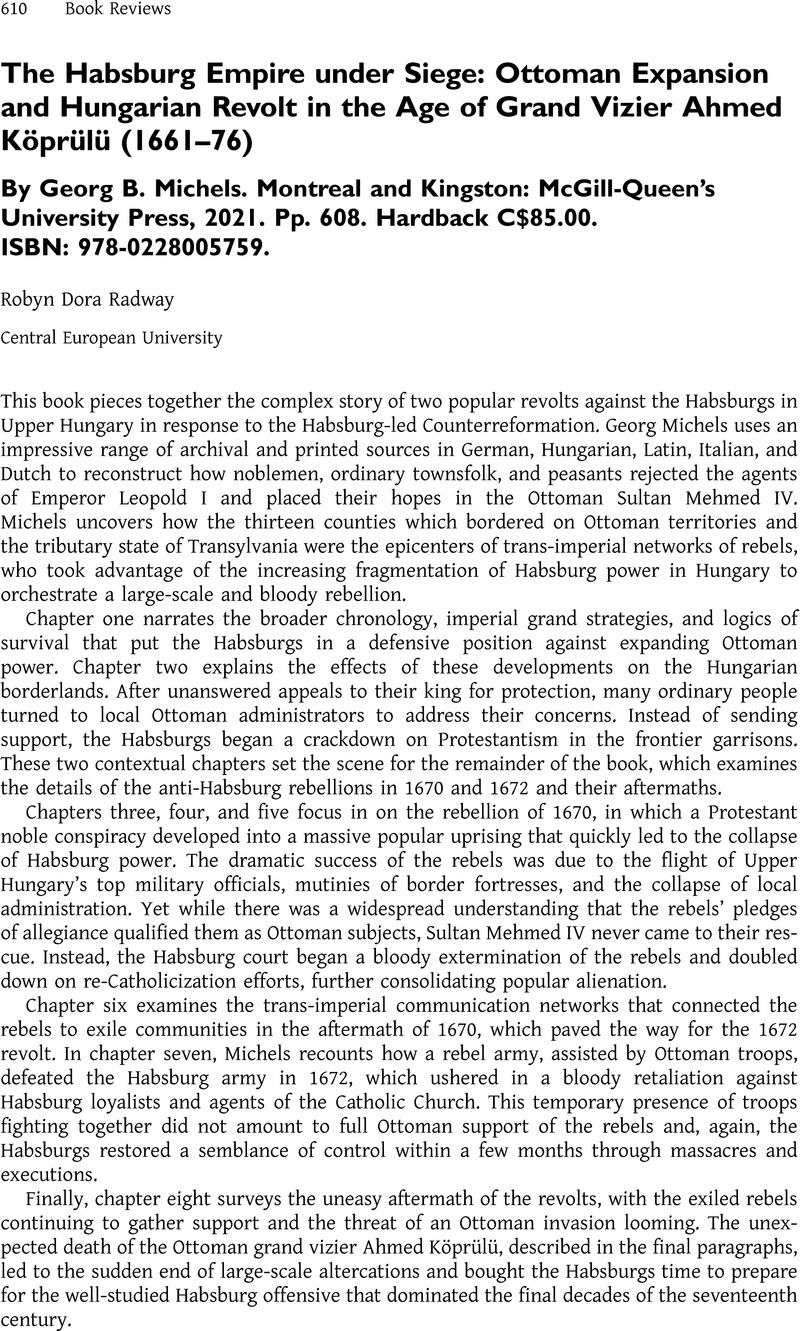No CrossRef data available.
Article contents
The Habsburg Empire under Siege: Ottoman Expansion and Hungarian Revolt in the Age of Grand Vizier Ahmed Köprülü (1661–76) By Georg B. Michels. Montreal and Kingston: McGill-Queen's University Press, 2021. Pp. 608. Hardback C$85.00. ISBN: 978-0228005759.
Review products
The Habsburg Empire under Siege: Ottoman Expansion and Hungarian Revolt in the Age of Grand Vizier Ahmed Köprülü (1661–76) By Georg B. Michels. Montreal and Kingston: McGill-Queen's University Press, 2021. Pp. 608. Hardback C$85.00. ISBN: 978-0228005759.
Published online by Cambridge University Press: 05 January 2023
Abstract
An abstract is not available for this content so a preview has been provided. Please use the Get access link above for information on how to access this content.

- Type
- Book Review
- Information
- Copyright
- Copyright © The Author(s), 2022. Published by Cambridge University Press on behalf of Central European History Society of the American Historical Association


